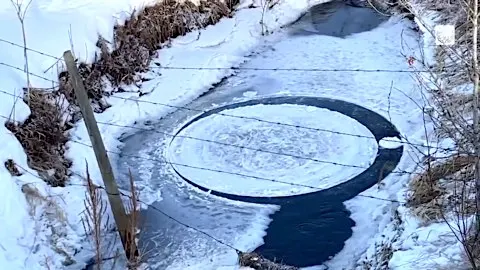
Mesmerizing 'satellite' ice disc captured on Alberta waterway (VIDEO)
You've probably heard of the terms ice disc or ice pancake at least once or twice over the course of a winter season, or have witnessed them in action.
They are quite fascinating to watch in action, with one captured on video recently on a stream in Alberta's Lac Ste. Anne County.
What are they, exactly?
The discs or pancakes, also known as ice pans, form under a specific set of conditions. While they're most commonly seen in the late fall or early spring, when large temperature fluctuations are common, they do formulate in the winter, as well.
The ice pancakes or discs come to fruition when turbulent water disrupts the formation of ice over a body of water. The melting ice sinks and induces a circular motion, according to The Weather Network meteorologist Tyler Hamilton.
The distinctive 'fluffy' appearance of the edges of the discs originates from a slushy type of ice that forms in rivers, known as frazil. Frazil slush is a mixture of these ice crystals and water, and it's the first type of ice you see in a river when it starts to freeze.
Thumbnail courtesy of Tracy Christman, taken in Lac Ste. Anne County, Alta.
Watch the video above to see the circular ice disc in action.






